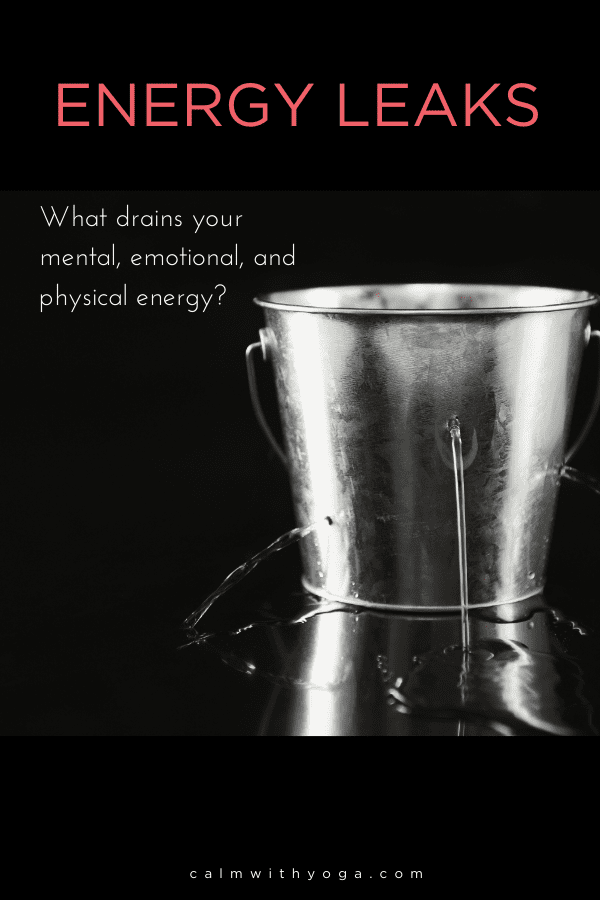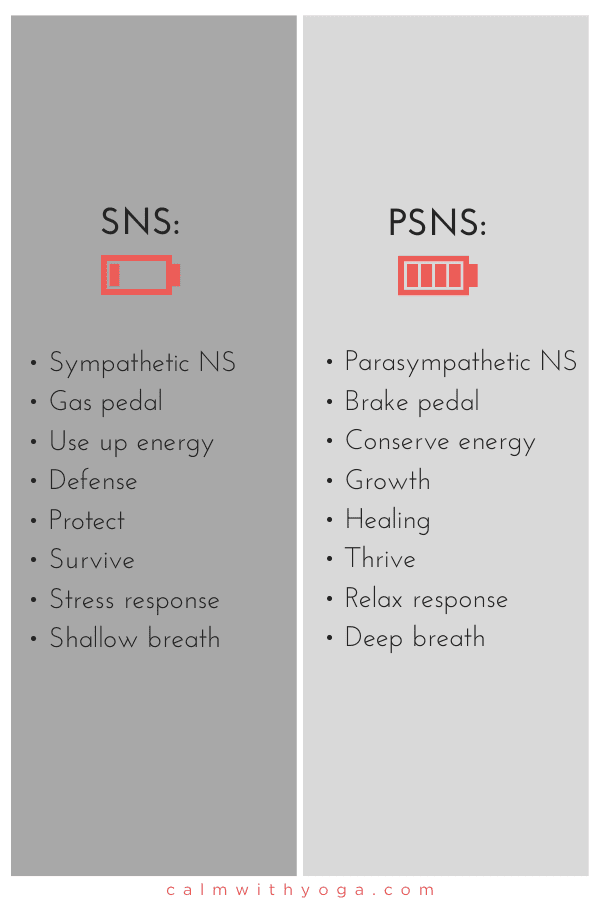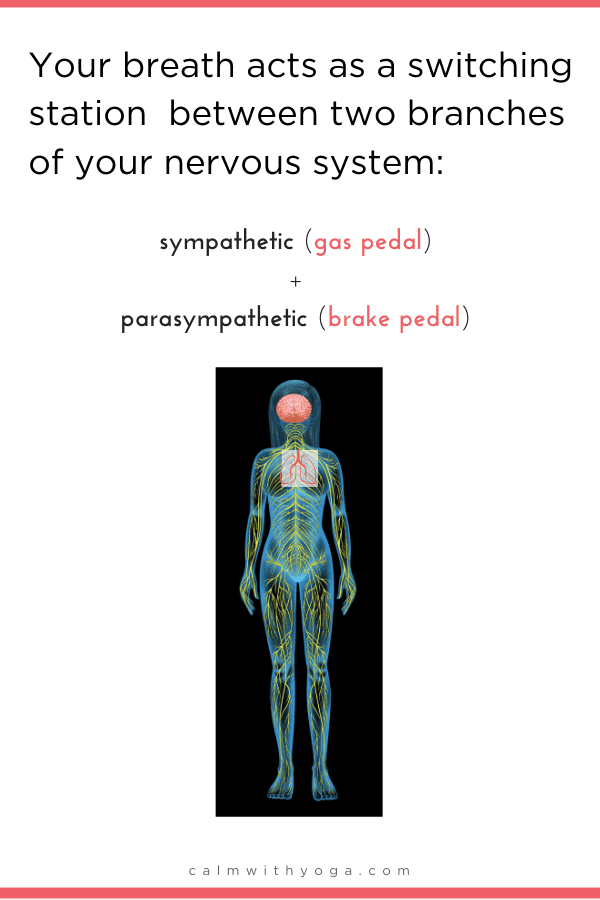The higher your energy level, the more efficient your body.
The more efficient your body, the better you feel and the more you will use your talent to produce outstanding results.
Tony Robbins, author, entrepreneur, philanthropist
Chances are you’ve got a lot on your plate and are doing your best to manage it all as effectively as possible.
Most of us want to reach our goals, tackle our to-do’s, show up for the people we love, create inspired work output, and somehow enjoy life’s little moments along the way.
So how are we supposed to achieve all of this if we’re running on fumes at the end of each day?
Another cup of coffee is not always the best answer.
It turns out that something as simple and overlooked as your own breath is a proven powerful tool for naturally boosting your energy levels in a sustainable way.
Pranayama (yoga breathing practices) can provide your bodily system with an instant reboot and reset.
Using breathwork as a meditation practice helps to increase well-being and empowering emotional states.
Here’s how…
Plugging Energy Leaks + Building Energy Reserves

Feeling drained or ‘running on fumes’ is an indication of two things:
1 – that we have holes in our vital energy bucket, and these leaks are depleting our reserves
2- that we aren’t efficiently building energy reserves fast enough, because we’re expending more energy than we’re replenishing.
The nervous system (NS) is one of the main mechanisms at play when it comes to energy management.
Our bodies are wired with two branches of the autonomic nervous system: the sympathetic nervous system (SNS) and the parasympathetic nervous system (PSNS.)
Think of them like this:

The SNS is the branch that is responsible for mobilizing energy reserves during real or perceived stressful/ challenging/ demanding situations. (aka stress response, fight-flight-freeze response)
The SNS acts much like a gas pedal, expending energy when it is activated.
The PSNS is the branch that oversees energy conservation during periods of rest, safety, and connection. (aka relaxation response, rest-and-digest response)
The PSNS is the brake pedal that helps us slow down so we can plug leaks, minimize drain, and refuel or replenish reserves.
If we don’t change the way our body responds to challenging and demanding situations, we’ll keep activating the gas pedal more and more while activating the brake pedal less and less.
We can balance these two systems out and therefore balance our energy out by mindfully and intentionally activating our breath.
The thing these two branches have in common is the breath, which acts like a switching station between the two.

Nadi Shodhana, aka Alternate Nostril Breathing (ANB): A Science-Backed Yogic Hack
The nervous system can be compared to a huge power-generating center.
The brain and spinal cord can be seen as the generating station.
The nerves and nadis carry the electricity throughout the body.
If there is a good flow of electricity (i.e., energy or prana) and if the wires conducting the electricity are all strong, sturdy, and in good shape, everything runs well.
But if there is no adequate flow of energy or if the wires leading from the generator are damaged or there are loose connections, then the power system does not function optimally.
Through yoga practice, particularly pranayama, the nadis and nerve centers are purified and stimulated, and the energy is channeled to optimal output and functioning.
– Swami Satchidananda, The Breath of Life: Integral Yoga Pranayama
You’re about to learn a powerful, yet very simple yogic breathing exercise that has been proven to help balance out disparities between the two autonomic nervous system branches.
By adopting a consistent and regular practice with just this one technique, you can begin to manage your energy better and aid your body in responding more efficiently to stressful situations.
This technique works so well that even Hillary Clinton used it to help her manage her energy during and after the most recent elections. (1)
ANB is also called Nadi Shodhana Pranayama. (‘subtle energy clearing breathing technique’ )
In Sanskrit ‘nadi’ means ‘channel’ and ‘shodhana’ means ‘purifying.’
Therefore, this technique cleanses and purifies the nadis – the channels through which vital energy (prana) flows.
It involves alternating exhales and inhales between nostrils… switching between the left side and right side.
We breathe out and in through one nostril, while the other nostril is closed and vice versa, repeating the sequence.
This switching between nostrils is thought to impact the nasal cycle, which is linked to activity in the brain.
The nasal cycle refers to the congestion/decongestion pattern of the nasal cavities.
Nostril opening switches between nostrils on average every 1.5 – 4 hours. (2)
The openness of the nostril is connected to activity in the opposite hemisphere of the brain.
For whichever nostril is more open, the opposite side of the brain is more active. (3)
5 science-backed benefits of alternate nostril breathing:

1- ANB helps to balance your nervous system
Breathing alternatively through each nostril has been shown to help restore balance to your autonomic nervous system. (4)
This means that every time you practice ANB you’re helping to plug the energy leaks in your bucket.
You’ll generate more energy and less fatigue while also increasing your resilience to effectively face the stresses and challenges of everyday life.
2 – ANB activates your PSNS, which increases the calming/ relaxation/ regenerative response in the body. (5)
This means that every time you practice ANB you’re not just plugging leaks, you’re also replenishing reserves.
3 – As mentioned, ANB appears to have a balancing effect on the activity of the hemispheres of the brain. (6)
4 – ANB has been shown to reduce high blood pressure while possibly improving performance and concentration. (7)
5- It may improve respiratory and circulatory function. (8)
How to practice alternate nostril breathing:
Place your left hand on the left knee, palm open to the sky.
Use the thumb, middle finger, and ring finger on the right hand to alternately block off
the nostrils as we breathe out and in.
The thumb on your right hand blocks the right nostril as you breathe out, and in.
The ring and middle fingers block the left nostril as you breathe out and in.
Now rotate your hand so you are ready to use the thumb to close the right nostril and the middle
and ring finger to close the left nostril, holding your hand, near your face.
Breathe in.
Use the right thumb to block the right nostril and breathe out.
Keep the thumb where it is and breathe in.
Now switch to blocking the left nostril with the fingers and breathe out.
Keep the fingers where they are and breathe in.
Release your nostrils and breathe normally.
You have now completed one round of Nadi Shodhana/ Alternate nostril pranayama.
You’re doing amazing things for your body and mind by using this pranayama practice at least 5 minutes a day.
Consistency matters and each session builds upon the next.
Show up for your practice and your practice will reward you with the full range of benefits.
REFERENCES
:
(1) https://www.washingtonpost.com/news/inspired-life/wp/2017/09/15/hillary-clinton-used-alternate-nostril-breathing-after-her-election-loss-heres-why-you-really-should-too/?noredirect=on&utm_term=.e89d63db7edf
(2) https://www.ncbi.nlm.nih.gov/pmc/articles/PMC5053491/
(3) http://europepmc.org/abstract/med/6874437
(4) http://www.msjonline.org/index.php/ijrms/article/view/3581
(5) https://www.ncbi.nlm.nih.gov/pmc/articles/PMC3681046/
(6) http://www.sciencedirect.com/science/article/pii/0167876084900175
(7) https://www.ncbi.nlm.nih.gov/pmc/articles/PMC3628802/
(8) https://www.researchgate.net/publication/23168383_Effect_of_alternate_nostril_breathing_exercise_on_cardiorespiratory_functions












